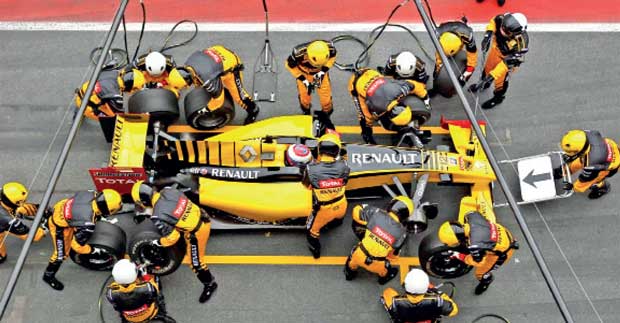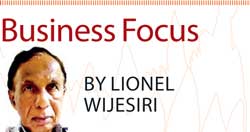Reply To:
Name - Reply Comment
Unleashing your leadership potential for breakthrough results

 Any commercial organisation is, by definition, a collection or teams of people who work together to achieve a purpose, often expressed as the organisation’s goals, objectives or targets.
Any commercial organisation is, by definition, a collection or teams of people who work together to achieve a purpose, often expressed as the organisation’s goals, objectives or targets.
Clearly, high-performing teams are successful teams. But what is success? In situations where teams are in direct competition with each other – such as in cricket or football, where the sole measure of success is winning matches – the high-performing teams are evident: they’re at the top of their league.
Knowing, however, whether your work team is high-performing is difficult because you don’t have other teams against which to compare performance directly. Your team may be successful in terms of achieving the expected objectives but how do you know whether it’s performing to its full potential? Today, we will discuss several approaches that you can take to identify and adopt the characteristics of high-performing teams.
Difference
To know what high-performing teams are, all we have to do is upgrade our team definition:
Team: an interdependent group of individuals who share responsibility and a common goal
High-performing team: an interdependent, stable, role-defined group of individuals who share responsibility, mutual trust and values, while having a strong leadership and clear focus on a common goal
So, our next question is ‘how’ to make your team high-performing. Creation of a high-performing team doesn’t just happen on its own.
There are five things you must do if you want your team to become a high-performing one.
1. Form a stable team
When teams form, you should focus your attention on the stable stage. You should take your time and carefully select team members because once you do it you should stick with them through thick and thin.
It takes at least six months to create a high-performance team, if everything runs smoothly. If the members often come and go and the only real improvements come from strengthening the inter-team relationships, creating a high-performing team becomes very difficult.
2. Develop a cohesive team
The members of a cohesive team stick and hold together and resist separation. It happens when the members possess bonds that link them to one another or the whole group. Cohesive teams don’t happen overnight - it takes time and diligence to achieve them. Team networks with a high degree of cohesion provide a free stream of information and build trust amongst the team members, thus increasing the performance.
However, you have to be very careful as there is a real danger of the team becoming over-cohesive and susceptible to groupthink, where, over time, their shared beliefs and assumptions become wrong, if unchallenged by someone. Therefore, while cohesion is crucial for high-performance teamwork, it has to be carefully managed and regularly offset by input of ideas from outside sources.
3. Coach the team as a team, not as a group of individuals
Usually, human resource departments focus solely on individual skill development rather than the growth of a team. This approach will not get you a high-performing team but a drastically inferior high-performing group. Here are a few recommendations:
(a) Have regular one-on-one meetings with your team members. Use them to discuss individual’s habits and behaviours and how they affect the team. You should hold these meetings off-site, where no other members can eavesdrop. If you’re dealing with less confident team members, ask for a written feedback.
(b) Provide thoughtful feedback on small but important things, like the way individual faces other members, how much they interrupt others and how well they listen.
(c) Since you are a leader, be an example of the behaviour you expect everyone to follow. Know your failings and work on them. Your team will react well to the positive example and are more likely to follow your lead.
(d) Rearrange office seating to encourage member interaction and create opportunities to encourage social conversation. Set desks so everyone can see each other and choose an office that suits the size of your team: if it’s too small, it’ll feel cramped and uncomfortable; if it’s too big, the distance between the members will discourage interaction.
(e) The most important thing: do not change the team members unless you have no other choice.
4. Get them out of their workspaces
Stimulate interaction between the team members in places other than their desks: it can be around a water cooler, in the outside back garden or in a lounge area with a round table. Casual chit-chat and relaxed atmosphere provide incentives for great ideas and increase team cohesion. This is also known as the water cooler effect.
To take it a step further, get your team out of the office altogether. Organise a simple team lunch or any other social event and just let them bond. Work-related topic will come up sooner or later and the relaxed atmosphere will encourage everyone to give their input on the subject. Whether it is fruitful or not, it doesn’t matter.
Somewhere among those suggestions there may be a solution your team has been looking for.
5. Set effective performance goals
The difference between effective and ineffective goals is actions with a clear intent. By setting effective goals, you will make the team more effective as well: they will be more energized, focused, persistent, creative and tactile.
High-performance teams are called high-performing because they are able to do much more quality work in the shorter amount of time. However, it is up to you as a team leader to provide them with the means to do that by setting highly specific goals. A goal that states “Increase speed of loading time of page X to under 0.7 seconds” sounds much more specific and challenging than plain “increase the page loading speed” request.
High performers
Common characteristics of a high-performing team: what separates a high-performing team from any old team is its specific characteristics.
This is the foundation upon which the team is built. The ineffective procedures can cause problems with gathering, organising and evaluating information, while at the same time discouraging innovation and risk-taking.
High-performing team members share a vision of their purpose and aim. They also share goals, objectives and values, while being focused on results and solutions.
In properly made teams, each member possesses a certain knowledge, set of skills and personals strengths. Synergy with other members is what makes the team highly productive.
If you ask a member of a high-performing team about their colleagues’ ability, they will always answer: “If anyone can do that job, he can. And not only that - he will do it right!” Everyone values and supports each other and feedbacks are wholeheartedly accepted. There is no bad blood - only desire to succeed.
Projects change all the time. When it comes to handling drastic changes, high-performance teams don’t revel in self-pity and give up. They analyse, adapt and perform.
Mistakes are a learning tool and there are no repercussions if the members examine what went wrong and don’t make the same mistake again.
To ensure the plan is heading in the right direction, a high-performance team will take a step back and take a hard look after every major milestone. Why? Because it gives them a realistic completion time as well as an opportunity to foresee obstacles that may arise.
In high-performing teams, dialogue and attentive listening is ever present and there is a constant flow of information. Constructive conflicts between team members do happen but are mostly organisational in nature.
(Lionel Wijesiri is a retired corporate director counting three decades of senior management experience. He is now an independent consultant and a freelance journalist. He may be contacted on [email protected])